Click on images to enlarge
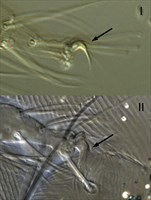
Fig. 1. Tetranychus marianae adult female paralectotype - detail of empodia I and II (arrows indicate minute dorsal spur).

Fig. 2. Tetranychus marianae adult female paralectotype - detail of empodia III and IV (arrow indicates presence of minute dorsal spur).
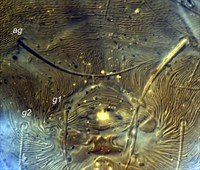
Fig. 3. Tetranychus marianae adult female paralectotype - detail of pattern of pregenital striae.
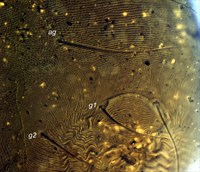
Fig. 4. Tetranychus marianae adult female paralectotype - detail of pattern of pregenital striae.
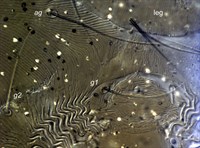
Fig. 5. Tetranychus marianae adult female paralectotype - detail of pattern of pregenital striae.
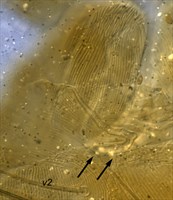
Fig. 6. Tetranychus marianae adult female paralectotype - detail of peritreme (arrows indicate the hook).

Fig. 7. Tetranychus marianae adult female paralectotype - detail of prodorsal striae.
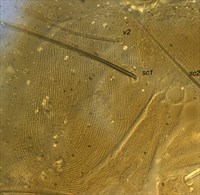
Fig. 8. Tetranychus marianae adult female paralectotype - detail of prodorsal striae.
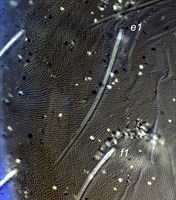
Fig. 9. Tetranychus marianae adult female paralectotype - detail of pattern of dorsal striae between setae e1 and f1.

Fig. 10. Tetranychus marianae adult female paralectotype - detail of pattern of dorsal striae between setae e1 and f1.
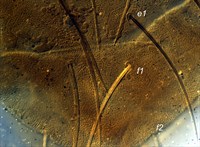
Fig. 11. Tetranychus marianae adult female paralectotype - detail of pattern of dorsal striae between setae e1 and f1.
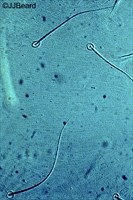
Fig. 12. Tetranychus marianae adult female paralectotype - detail of ventral striae and setae 1a and 3a.
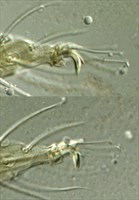
Fig. 13. Tetranychus marianae adult male cotype from apple - detail of claw I with small dorsal spur.

Fig. 14. Tetranychus marianae adult male paralectotype - detail claws I, III, IV (arrows indicate the minute spur).

Fig. 15. Tetranychus marianae adult male cotype from apple - detail of pattern o f prodorsal striae.
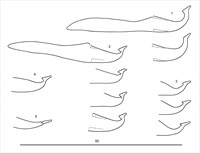
Fig. 16. Tetranychus marianae adult male cotypes from apple - detail of aedeagus (at different focal points).

Fig. 17. Tetranychus marianae adult male paralectotype - detail of aedeagus (at different focal points; arrows indicate the tip).

Fig. 18. Tetranychus marianae adult male paralectotype - detail of aedeagus (at different focal points; arrows indicate the tip; outline of aedeagus indicated in white in lower image).
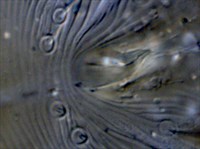
Fig. 19. Tetranychus marianae adult male paralectotype - detail of aedeagus.
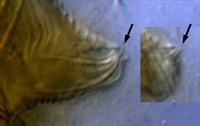
Fig. 20. Tetranychus marianae adult male paralectotype - detail of aedeagus (at different focal points; arrow indicates the tip).

Fig. 21. Tetranychus marianae adult male cotype from apple - detail of aedeagus (at different focal points).
Material examined
types (syntypes and "cotypes")
Taxonomy
Subfamily Tetranychinae
Tribe Tetranychini
Common Name
Tropical red spider mite
Distribution
+Australia, American Samoa, Argentina, Bahamas, Brazil, Colombia, Costa Rica, Cuba, Fiji, French West Indies, Guam Island, Honduras, *Northern Mariana Islands, Marshall Islands, Mexico, New Caledonia, Nicaragua, Papua New Guinea, Philippines, Puerto Rico, Solomon Islands, Thailand, USA, Vanuatu, Vietnam, West Indies, Western Samoa
* type location (Mt Lasso, Tinian Island)
Taxonomy Changes
None
Diagnosis
Female
- ventral striae with lobes between genital region and setae 1a (Fig. 12)
Male
Hosts
>70 recorded species of host plant, including: Abelmoschus esculentus (Malvaceae), Alocasia macrorhiza (Araceae), *Argyreia sp. ? (Convolvulaceae), Artemisia douglasiana (Asteraceae), Brassica oleracea (Brassicaceae), Brugmansia candida (Solanaceae), Capsicum annuum (Solanaceae), Carica papaya, C. pubescens (Caricaceae), Cucumis sativus, Cucurbita maxima (Cucurbitaceae), Euphoriba hirta (Euphorbiaceae), Glycine max (Fabaceae), Gossypium barbadense, G. hirsutum, Hibiscus sp. (Malvaceae), Ipomoea aquatica, I. batatas, I. triloba (Convolvulaceae), Lablab purpureus (Fabaceae), Manihot esculenta (Euphoribaceae), *Melanolepis multiglandulosa (Euphorbiaceae), Morus sp. (Moraceae), Musa sapientum (Musaceae), Nicotiana glauca (Solanaceae), Orchidaceae, Passiflora biflora, P. edulis, *P. foetida (Passifloraceae), Phaseolus vulgaris (Fabaceae), *Ricinis communis (Euphorbiaceae), Sida acuta, S. rhombifolia (Malvaceae), Solanum elaeagnifolium, S. indicum, S. mauritianum, S. melongena, S. nigrum, S. tuberosum (Solanaceae), Thunbergia alata (Acanthaceae), Vigna sp. (Fabaceae), Zea mays (Poaceae)
*type hosts as listed by McGregor (1950)
Similar Taxa
Tetranychus evansi Baker & Pritchard 1960 (see deMoraes et al. 1987)
Biology
This species is recorded as a pest of cotton and tomato (Schuster 1959). Noronha (2006) provides some biological data based on reared individuals.
References
+Davis, J.J. (1968a) Studies of Queensland Tetranychidae. 3. Records of the genus Tetranychus. Queensland Journal of Agricultural and Animal Sciences 25: 57-67
Davis, J.J. (1969c) A note on the cuticular lobes of Tetranychus marianae McGregor (Acarina: Tetranychidae) from Papua. Journal of the Australian Entomological Society 8:112
*McGregor, E.A. (1950) Mites of the family Tetranychidae. American Midland Naturalist 44: 257-420
Migeon, A. and Dorkeld, F. (2006-2017) Spider Mites Web: a comprehensive database for the Tetranychidae. http://www.montpellier.inra.fr/CBGP/spmweb
Moraes, G.J., McMurtry, J.A. and Baker, E.W. (1987) Redescription and distribution of the spider mites, Tetranychus evansi and T. marianae. Acarologia 28: 333-343
Noronha, A.C. da S. (2006) Biological aspects of Tetranychus marianae McGregor (Acari, Tetranychidae) reared on yellow passion fruit (Passiflora edulis Sims f. flavicarpa Deg.) leaves. Revista Brasileira de Zoologia 23: 404-407
Schuster, M.F. (1959) Chemical control of Tetranychus marianae McG. on tomatoes in lower Rio Grande Valley. Journal of Economic Entomology 52: 763-764
Seeman, O.D. and Beard J.J. (2011) Identification of exotic pest and Australian native and naturalised species of Tetranychus (Acari: Tetranychidae). Zootaxa 2961: 1-72
Notes
There is a great deal of variation in the shape of the aedeagus of non-type specimens identified as T. marianae. For this reason, only data from the types is presented here.
This species was first recordd in Australia, on cotton in northern Queensland by Davis (1968, 1969). These voucher specimens have not yet been examined for confirmation. However, Seeman & Beard (2011) list several more recently collected specimens.
Copyright © 2018. All rights reserved.